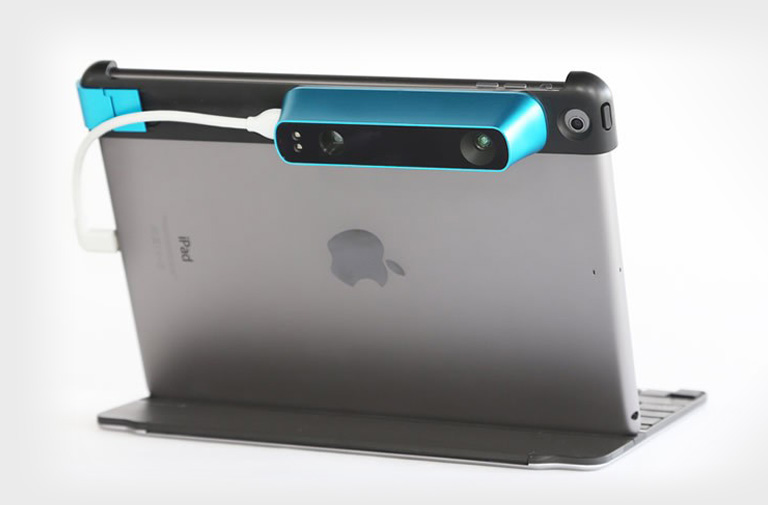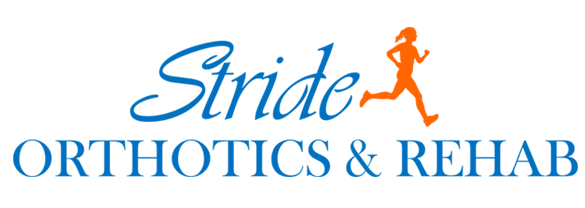We Strive For An Exceptional Patient Experience
Our number one priority is providing an exceptional patient experience every time you interact with us.
We create a warm, welcoming clinical environment, designed with your comfort in mind. We take the time to fully understand your health concerns and answer any of your questions, so that we can develop a treatment plan that allows you to return to a healthy, active lifestyle with healthcare products or services that address your particular needs.
Our team prioritizes your ongoing healthcare needs with complimentary consultation, assessment, and follow-up appointments that allow us to closely monitor your progress and recommend adjustments when necessary.


We Focus on You
Physicians and specialists for years have referred their patients to Stride Orthotics & Rehab because they are confident in our knowledge, patient focused approach to treatment, and in the services and products we provide.
When we welcome you into our clinics for the first time, you can expect professional, courteous service throughout your visit. First-time appointments can typically consist of three phases:
Initial Consultation: We get to know you, learn all about your diagnosis from your perspective, listen carefully to what hurts, and ask you about your activity levels, lifestyle, and more.
Biomechanical Assessment: We assess how you walk (gait) and analyze what biomechanical faults might be contributing to your condition. This assessment, in combination with measurements we take, allows us to make the right recommendations for you.
Treatment Discussion: Patient education is important to us, which is why we openly discuss all of your treatment options, answer all of your questions, and ensure you’re 100% confident before we proceed
Every aspect of your treatment is entirely focused on you, right from our very first meeting. We will work hard to keep you happy, satisfied, and confident while in our care.


3D Scanning Technology
Stride Orthotics & Rehab is committed to using quality technology to ensure the most accurate scans possible, so your custom orthotics are comfortable, fit well, and effectively treating your condition.
Our 3D scanner captures a digital image of your feet with pinpoint accuracy. We review these scans in detail before submitting the images to the orthotics lab, where they are custom-built and shipped to our clinic.
Getting the most accurate impression of your foot has never been easier, faster, or more comfortable and convenient for you!


Common Pathologies We Treat
Custom orthotics aren’t just insoles that make walking more comfortable. They are custom-made medical devices that are used to reduce foot, ankle, shin, knee, hip, and lower back pain, and are very effective at treating a wide array of common pathologies caused by poor foot biomechanics.
Pain experienced either along the Achilles tendon or in the back of the heel (calcaneus) at the attachment of the Achilles tendon, usually caused by the foot rolling in (over-pronating) or rolling out (supinating) excessively, causing a shortening of the Achilles tendon. Custom-fitted orthotics can provide pain relief and healing over time by addressing the improper mechanics of the foot.
Many people suffer with various forms of arthritis that causes pain, swelling, inflammation, and deformities in joints. Two of the most common forms of arthritis that we see in the clinics involve osteoarthritis (OA) and rheumatoid arthritis (RA).
OA: Our joints have cartilage that acts like a cushion between the bones. When this cartilage wears down, patients can experience pain, swelling, reduced range of motion, and deformity of the joints. Many causes can contribute to wear and tear of the joint(s), such as age, faulty biomechanics, injury, obesity, and genetics. Abnormal foot function can cause a lot of mechanical stress on the joints, resulting in premature breakdown, especially in athletes. Although we cannot “undo” the arthritis that is already evident, orthotics can allow for better alignment of the joints to reduce pain and inflammation as well as help slow down further progression.
R.A: This autoimmune disease attacks all the joints in the body, causing pain, inflammation, swelling, reduced range of motion and joint deformities. Proper support and correction from an orthotic can significantly reduce mechanical stress on joints, help maintain function, reduce pain and allow patients to stay as active as possible. It is important to be monitored by your rheumatologist or physician.
Bunions can be mild, moderate, or severe, and present as a deviations of the big toe joint, where the big toe shifts towards the second toe. Over-pronation of the foot can cause excess pressure on the big toe joint on propulsion (or toe-off), causing the joint to shift over time. Orthotics can prevent over-pronation of the foot, which will offload pressure on the joint to help slow down further bunion development and reduce or alleviate pain. Orthotics will not correct a bunion.
Calluses are a thickening of skin on the bottom of your feet which develop due to poor weight distribution during standing or walking. These calluses can be very painful. Custom orthotics can help correct the biomechanical fault by addressing the over-pronation of the foot to allow for more even distribution of the plantar pressures across the bottom of the foot. Once the underlying cause of the calluses is addressed, in most cases the calluses will disappear on their own.
Corns are a thickening of skin on the top of or in between the toe(s), usually the result of either a hammer toe (contracture or bending of a toe), or by excessive pronation in the foot causing friction between the toes. An orthotic can address the abnormal biomechanics of the foot by providing metatarsal support and reducing over-pronation of the foot. It is important to use proper shoes that provide enough width and depth to reduce rubbing on the corn. In severe cases, surgery may be needed.
Hammer toe is the result of a bending or “contracture” of the toe(s) at the proximal joint, which is the joint closest to the ball of the foot. If the contracture is in the joint furthest from the ball of the foot, it’s called mallet toe. When both joints are affected, the condition is known as claw toe. Patients usually will complain of pain in the joint(s) of the toe, especially if a corn is present and rubbing on the top of the shoe. The easiest and most non-invasive way to treat a hammer toe is to be fitted with a pair of custom orthotics, and to wear proper shoes that allow room in the toe box. Surgery might be necessary in severe cases.
The ilio-tibial band (I.T. band) is a band of connective tissue that runs along the “lateral”(outside) aspect of your thigh, and crosses over the outside part of the knee joint. If this band becomes stretched too tightly and starts to rub against the kneecap, you could experience pain and tenderness on the outside of the knee, especially with running uphill or on uneven terrain, and when walking up or down stairs. Stiffness or pain can also occur if you’ve been sitting with a bent knee for a couple of hours. If abnormal pronation of the foot is a factor, custom orthotics will reduce excessive internal rotation of the leg and reduce shortening of this band. Stretching, ice, laser therapy, and a change in footwear that includes the use of custom orthotics can correct this condition.
There are a number of factors that can affect one’s lower back. Poor muscle tone, arthritis, scoliosis, and repetitive strain due to improper biomechanics are among some of the main factors. It is important with the help of your doctor to narrow down the cause. If faulty foot mechanics play a role in the cause of your pain, using a custom orthotic device can be very effective in helping to alleviate your symptoms. Orthotics will correct overall alignment to reduce mechanical strain on a number of conditions such as general lower back pain, S.I. joint pain, piriformis syndrome, and sciatica. Other therapies may include proper stretching and exercise, laser therapy, massage, ergonomic assessment in the workplace, and nutrition.
This painful condition affects a nerve in the ball of the foot causing pain or burning to occur, usually between the 3rd and 4th metatarsals and into the corresponding toes. Irritation of this nerve causes additional nerve cells to grow or thicken around the nerve that leads the nerve being compressed or pinched. Morton’s Neuromas can be caused from improper foot mechanics or deformities, ill-fitting shoes like high heels or shoes that are too tight in the toe box, and in certain sports or activities that place a lot of impact on the forefoot and have footwear that may be tight fitting. If the source problem has been diagnosed as biomechanical, custom orthotics can correct the abnormal foot function to reduce irritation on the nerve.
PFS is a tracking problem of the patella (knee cap). Patients generally complain of pain or swelling around or beneath the patella, especially after physical activity, climbing stairs, or prolonged sitting. A major cause of this condition is over-pronation of the foot. Over-pronation can cause excessive internal rotation of the tibia, which pulls on the patellar tendon and causes the patella to track improperly in the femoral groove. If not corrected, this will cause wear and tear on the back of the patella. Custom orthotics will correct the abnormal foot mechanics to allow for better alignment and tracking of the patella. Ice therapy and knee strengthening exercises to help with muscle imbalances are also recommended with this condition.
One of the most common foot complaints people have is plantar fascia. Over-pronation of the foot can cause excess twisting and shortening of the fascia, the tendon-like band of tissue on the bottom of your foot. Classic symptoms include pain, tenderness, and swelling in the calcaneus (heel) or along longitudinal arch of the foot, especially when getting out of bed in the morning, after prolonged periods of sitting or standing, walking on hard surfaces, and participating in sports or other physical activity. Custom orthotics can help heal this condition by preventing over-pronation of the foot to reduce pulling on the plantar fascia. We also recommend icing the affected area, stretching the fascia, rolling a tennis ball or other round object under your arch, and wearing indoor shoes with the orthotics at home.
There are two types of this condition: anterior shin spints, where pain occurs along the muscle (tibialis anterior) in the front of your lower leg, and medial shin splints, in which pain occurs along the tibia (shin bone). Both the tibialis anterior and tibialis posterior muscles are anti-pronators. Orthotics are very effective in addressing the pronation issue in the foot to reduce mechanical strain and allow the pain and inflammation to settle. Ice and rest to reduce inflammation is also recommended.

